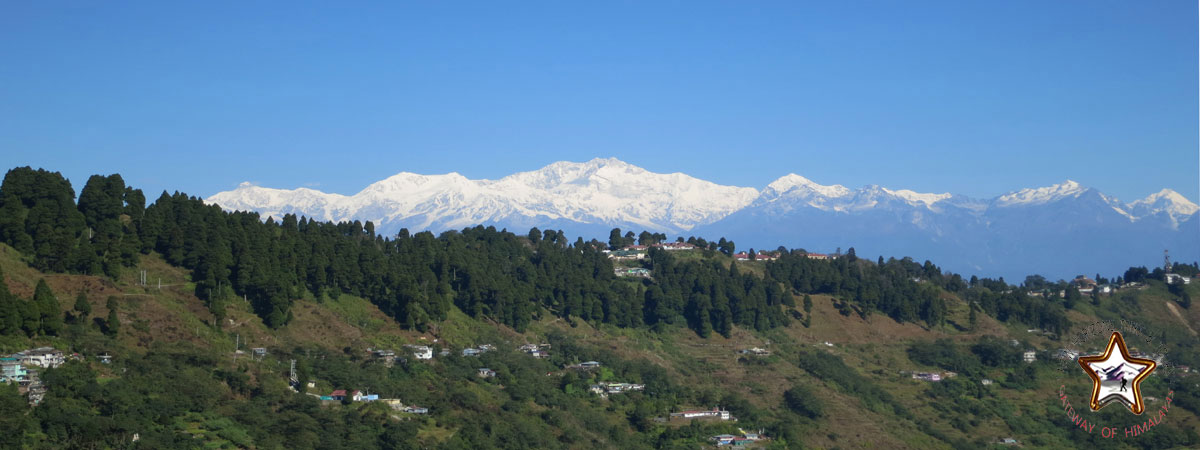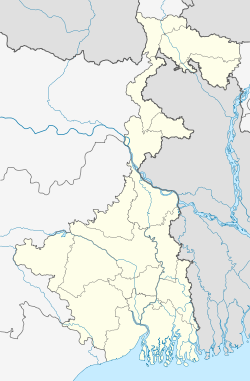| INTRODUCTION:
Darjeeling is a town and a municipality in the Indian state of West Bengal. It is located in the Mahabharat Range or Lesser Himalaya at an elevation of 6,700 ft (2,042.2 m). It is noted for its tea industry, the spectacular views of Kangchenjunga, the world’s third-highest mountain, and the Darjeeling Himalayan Railway, a UNESCO World Heritage Site. Darjeeling is the headquarters of Darjeeling district which has a partially autonomous status within the state of West Bengal. The development of the town dates back to the mid-19th century, when the colonial British administration set up a sanatorium and a military depot. Subsequently, extensive tea plantations were established in the region, and tea growers developed hybrids of black tea and created new fermentation techniques. The resultant distinctive Darjeeling tea is internationally recognised and ranks among the most popular of the black teas. The Darjeeling Himalayan Railway connects the town with the plains and has one of the few steam locomotives still in service in India. Darjeeling has several British-style public schools, which attract pupils from India and neighbouring countries. The varied culture of the town reflects its diverse demographic milieu consisting of Gorkhas, Bhutia, Lepcha and other mainland Indian ethno-linguistic groups. Darjeeling, with its neighbouring town of Kalimpong, was a centre of the Gorkhaland movement (Separate State demand within India) in the 1980s. The town’s fragile ecology has been threatened by a rising demand for environmental resources, stemming from growing tourist traffic and poorly planned urbanisation. |
 |
| GEOGRAPHY:
Darjeeling is the main town of the Sadar subdivision and also the headquarters of the district. It is located at an elevation of 6,700 ft (2,000 m)in the Darjeeling Himalayan hill region on the Darjeeling-Jalapahar range that originates in the south from Ghoom. The range is Y-shaped with the base resting at Katapahar and Jalapahar and two arms diverging north of the Observatory Hill. The north-eastern arm dips suddenly and ends in the Lebong spur, while the north-western arm passes through North Point and ends in the valley nearTukver Tea Estate. The hills are nestled within higher peaks and the snow-clad Himalayan ranges tower over the town in the distance. Kanchenjunga, the world’s third-highest peak, 8,598 m (28,209 ft) high, is the most prominent mountain visible. In days clear of clouds, Nepal’s Mount Everest, 29,035 ft (8,850 m) high, can be seen. |
 |
| CLIMATE:
Darjeeling has a temperate climate subtropical highland climate with wet summers caused by monsoon rains. The annual mean maximum temperature is 14.9 °C (58.8 °F) while the mean minimum temperature is 8.9 °C (48.0 °F), with monthly mean temperatures range from 6 to 18 °C (43 to 64 °F). The lowest temperature recorded was −5 °C (23 °F) on 11 February 1905. The average annual precipitation is 309.2 cm (121.7 in), with an average of 126 days of rain in a year. The highest rainfall occurs in July. The heavy and concentrated rainfall that is experienced in the region, aggravated by deforestation and haphazard planning, often causes devastating landslides, leading to loss of life and property. |
|
CULTURE:The culture of Darjeeling is diverse and involves a variety of indigenous practices and festivals as mentioned above. The Nepali Hindus as well as the various Buddhist ethnic groups such as the Lepchas, Bhutias, Kiranti Limbus, Tibetans, Yolmos, Gurungs and Tamangs, each have their own distinct language and culture and yet share a harmonious co-existence. A popular food in Darjeeling is the Nepalese and Tibetan momo, a steamed dumpling containing meat cooked in a doughy wrapping and served with clear soup and achar. A form of Tibetan noodle called thukpa, served in soup form is also popular. Other commonly eaten dishes include alu dum, a potato preparation, and shaphalay, Tibetan bread stuffed with meat. Fermented foods and beverages are consumed by a large percentage of the population. Fermented foods include preparations of soybean, bamboo shoots, milk and Sel roti, which is made from rice. Tea is the most popular beverage, the Tibetan version is also drunk. Alcoholic beverages include Tongba, Jnaard and Chhaang, variations of a local beer made from fermenting finger millet. Colonial architecture characterises many buildings in Darjeeling, exemplified by several mock Tudor residences, Gothic churches, the Raj Bhawan, Planters’ Club and various educational institutions. Buddhist monasteries showcase the pagoda style architecture. Darjeeling is regarded as a centre of music and a niche for musicians and music admirers. Singing and playing musical instruments is a common pastime among the resident population, who take pride in the traditions and role of music in cultural life. Darjeeling also has a Peace Pagoda built in 1992 by the Japanese Buddhist organisation Nipponzan Myohoji. |
|
TRANSPORTATION:
Darjeeling can be reached by the 88 km (55 mi) long Darjeeling Himalayan Railway from New Jalpaiguri, or by National Highway 55, from Siliguri, 77 km (48 mi) away. The Darjeeling Himalayan Railway is a 600 mm (2 ft) narrow-gauge railway that was declared a World Heritage Site by UNESCO in 1999 for being “an outstanding example of the influence of an innovative transportation system on the social and economic development of a multi-cultural region, which was to serve as a model for similar developments in many parts of the world”, becoming only the second railway in the world to have this honour.Bus services and hired vehicles connect Darjeeling with Siliguri and Darjeeling has road connections with Bagdogra, Gangtokand Kathmandu and the neighbouring towns of Kurseong and Kalimpong. However, road and railway communications often get disrupted in the monsoons because of landslides. The nearest airport is Bagdogra Airport, located 90 km (56 mi) from Darjeeling. Within the town, people usually traverse by walking. Residents also use two-wheelers and hired taxis for travelling short distances. The Darjeeling Ropeway, functional since 1968, was closed in 2003 after an accident killed four tourists. It reopened in February 2012. |
|
